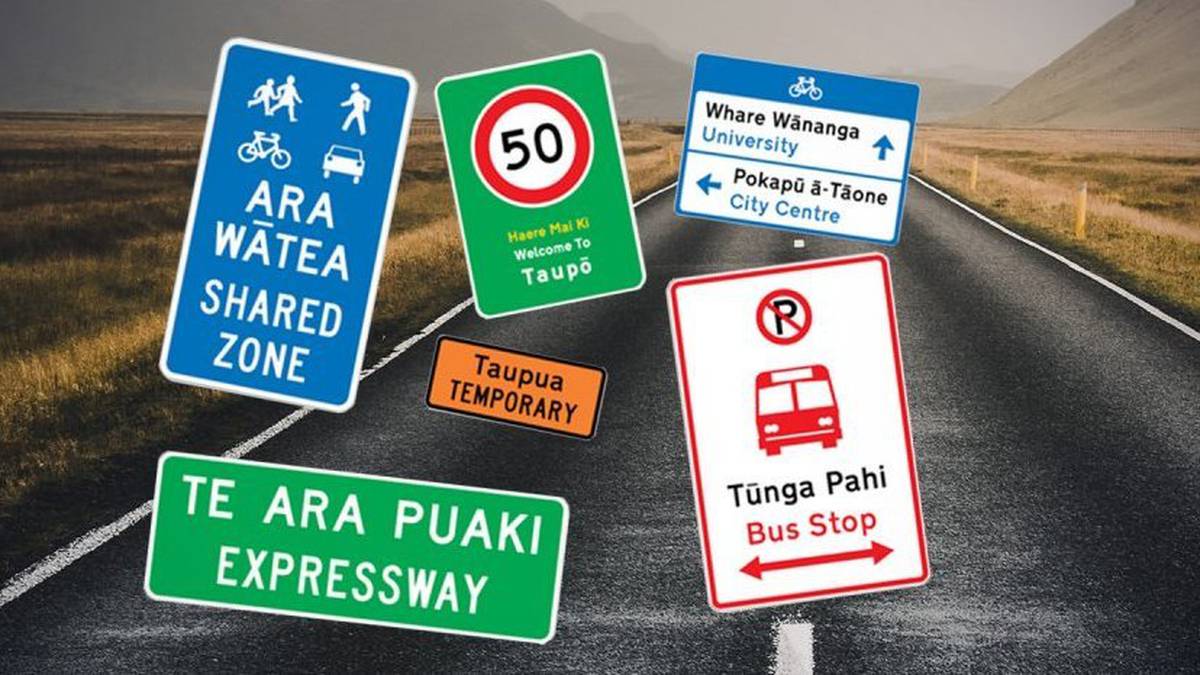Te Mātāwai and Waka Kotahi released a range of bilingual traffic signs for public consultation. Photo / Te Ao Māori News
OPINION
If you are driving in Ireland, the road signs will be in Irish Gaelic in italics, and English in capital letters. But it’s not that simple. There is a bit of a dog’s breakfast of signs on Irish roads, with signs of various colours and styles sharing a single signpost. It’s confusing and frustrating if you have to sit by the road and figure out where you want to go.
But not all Irish roads have signs. We had a wonderful self-drive 15 years ago, visiting cousins who were the immediate family of my grandfather who emigrated to New Zealand in 1910.
The phone call to Bridie was a delight. After sorting who we were and saying we were coming to visit, we said that we were driving and what signs do we follow. “Oh, there’s no signs,” she said in her lovely Irish lilt, “You just follow the road and ask someone.”
Advertisement
Well, there is no way we would have found our way on a Sunday morning to the small village of Ballysteen in County Limerick, 200km from Dublin, without the borrowed TomTom coded for Ireland. It was fortunate that it was 11am, as the locals standing outside the church spotted the foreign car and my cousin caught up with us as we were trying to figure out where to go next.
But asking directions in Ireland can be a bit fraught as well. I am a great fan of Charles Handy, the 91-year-old Irish business and social philosopher, who has written a number of thought-provoking books.
In the following excerpt, he describes asking his way in the Wicklow Mountains, just out of Dublin:
“It’s a bare and lonely spot and I got lost so asked a local the way.”
Advertisement
“Sure, it’s easy,” he said, “Just keep going the way you are, straight ahead, and after a while, you’ll cross a small bridge with Davy’s Bar on the far side. You can’t miss it, it’s bright red.”
“Yes. I’ve got that,” I said,” Straight ahead to Davy’s Bar.”
“That’s right,” he said,” Well, about a mile before you get there, turn right up the hill.”
His directions were so logical, I thanked him and drove off. I realised then that his directions made no sense and, as I made my way down to Davy’s Bar wondering which road to the right I should take, I reflected on life.
“By the time you know where you ought to go, it’s too late to get there, or, if you keep on going the way you are, you’ll miss the road to the future, or, if you don’t know where you are going, any road will take you there.”
Therein lies a paradox in creating bilingual road signs in New Zealand. Is this the road to the future and is there the potential to get confused and lost along the way? Certainly the Irish, the Scots, the Welsh and many other countries have no problem with bilingual signs, it’s a phenomenon they’ve got used to. The locals know what they mean, it’s just visitors that get confused.
Different signs can be confusing, as an Irish road code explains the sign – Dangerous Bend Ahead.
“Don’t be confused, there is actually a difference between dangerous corner and dangerous bend. The difference is that one is a corner and the other is a bend.”
There you go, no possibility of confusion – is there?
What seems to get lost in the bilingual debate is, what is the purpose of road signs, do we have so many with too much information that their central purpose is lost?
Advertisement
Road signs are in place to keep us safe, obey the rules and communicate messages to drivers and pedestrians that maintain order and prevent accidents. To be effective, a road sign should meet five basic requirements.
- Fulfil a need
- Command attention
- Convey a clear and simple message
- Command respect from road users
- Give adequate time to respond
Design, placement, operation, maintenance and uniformity are all aspects that should be carefully considered in order to expect the ability of all road signs to meet these five basic requirements. This creates a case for periodically auditing the relative value of all of the environmental clutter that populates our roadsides against those requirements.
A recent statement from the UK equivalent of our AA, suggests getting rid of a third of the roadside signs will help drivers better assess the road ahead, create less confusion and give a better sense of the potential dangers while enhancing the pleasure of driving.
Roadside signs are not a classroom learning experience. They are there to convey simple directional messages about driving safely and respecting the laws of the road.



